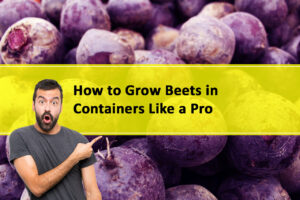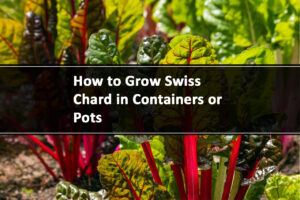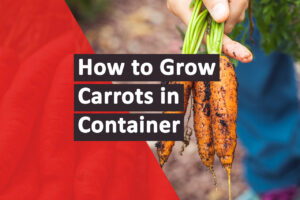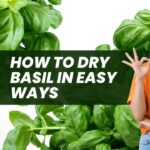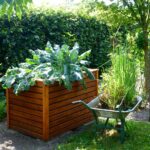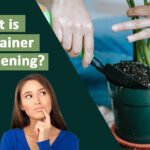Beautiful Plants For Your Interior
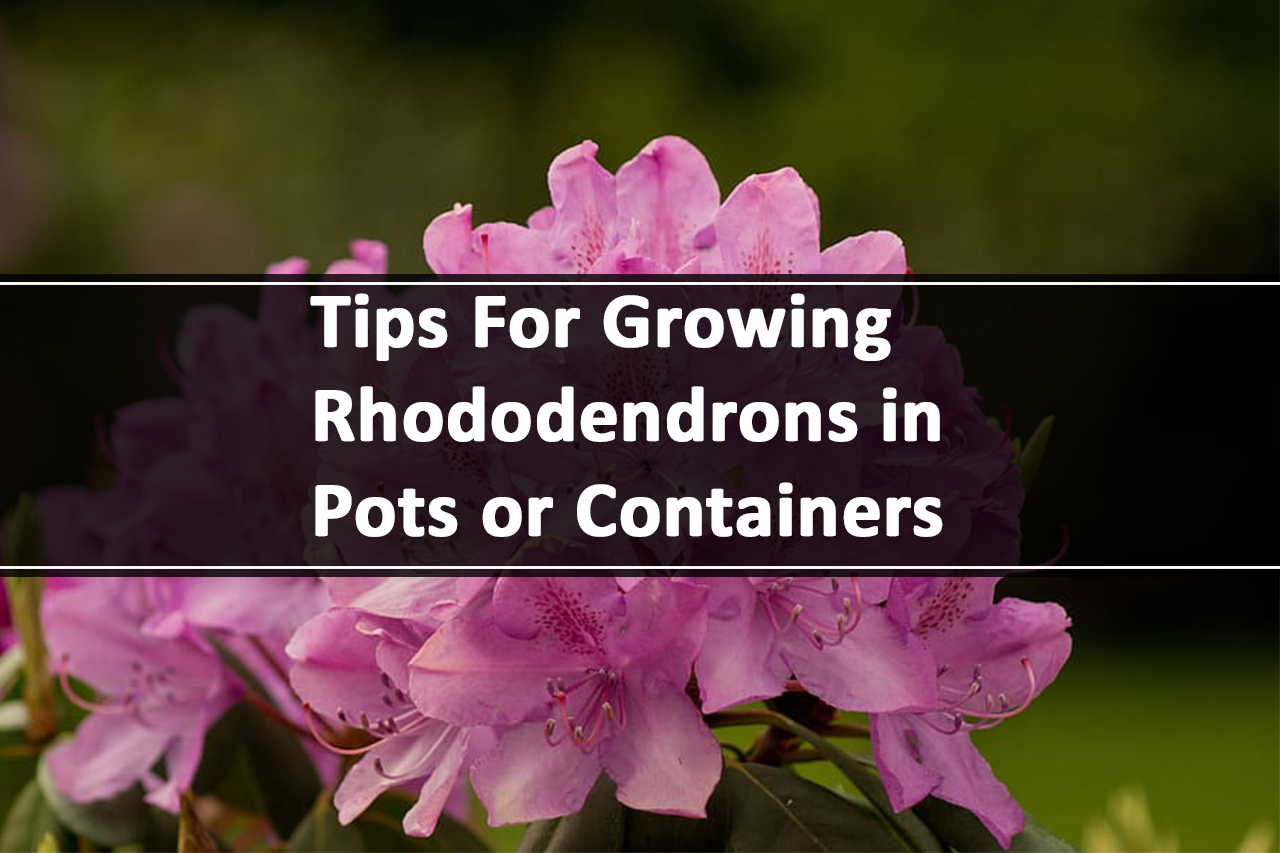
20 Tips For Growing Rhododendrons in Pots or Containers
Growing Rhododendrons in pots offer a delightful and accessible way to bring the splendor of these vibrant and captivating flowering shrubs right to your doorstep. While traditionally planted in the ground, Rhododendrons can thrive equally well when grown in containers, making them an excellent choice for small gardens, balconies, patios, and even indoor spaces. With their stunning blooms and lush foliage, these container-grown beauties add a touch of natural elegance and color to any confined setting.
Top Benefits of Growing Rhododendrons in Pots
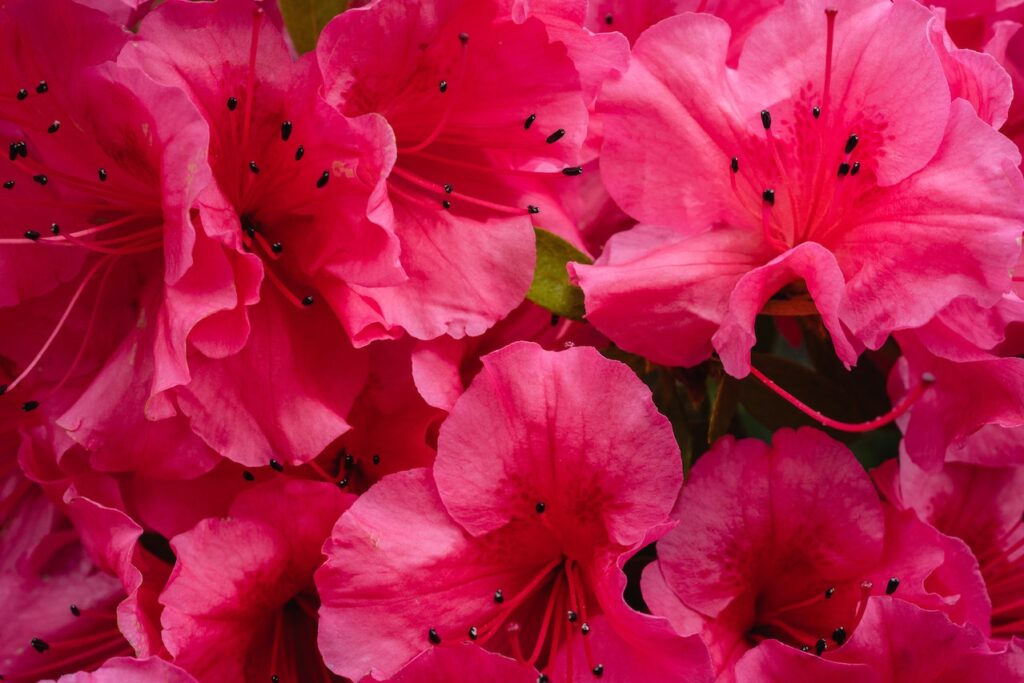
Growing Rhododendrons in pots offers numerous benefits, making it an attractive option for both experienced and novice gardeners. Here are some of the key advantages of cultivating these magnificent flowering shrubs in containers:
1. Easy Mobility
Container-grown Rhododendrons are portable, allowing you to move them around as needed. This mobility is advantageous for various reasons, such as adjusting the plant’s exposure to sunlight, protecting it from extreme weather conditions, or repositioning it for aesthetic purposes. You can easily change the layout of your garden or patio to suit different seasons or events.
2. Ideal Soil Control
Growing Rhododendrons in pots allows you to have better control over the soil composition. These acid-loving plants require well-draining, acidic soil to thrive, and containers enable you to create the perfect soil mix tailored to their specific needs. You can ensure that the pH level remains within the preferred range, promoting healthier root development and nutrient uptake.
3. Disease and Pest Management
Potted Rhododendrons are generally less susceptible to soil-borne diseases and pests that often affect plants grown in garden beds. The use of fresh and sterile potting mix reduces the risk of soil-borne pathogens, while elevated pots can deter crawling insects and pests.
4. Versatile Design Options
Growing Rhododendrons in pots opens up a world of design possibilities. You can experiment with various pot sizes, shapes, and colors to create eye-catching arrangements. Mixing different Rhododendron varieties or pairing them with compatible companion plants adds layers of color, texture, and visual interest to your garden or outdoor space.
5. Seasonal Display
Containers allow you to rotate plants or introduce new varieties depending on the season. With different Rhododendron cultivars boasting varying bloom times and flower colors, you can create a dynamic and ever-changing display throughout the year, keeping your garden vibrant and captivating across seasons.
6. Protection from Harsh Conditions
Container-grown Rhododendrons can be safeguarded from adverse weather conditions more effectively. During extreme cold or frost, you can move the pots to sheltered spots or indoors to protect the plants from potential damage. Similarly, during scorching summer days, you can position the pots in shaded areas to shield them from excessive heat.
7. Reduced Weed Competition
Potted Rhododendrons experience minimal weed competition compared to those grown in the ground. The use of weed-free potting soil and elevated containers reduces the chances of weeds taking root and competing for nutrients with your prized plants.
8. Easier Maintenance
Container gardening generally requires less maintenance than traditional garden beds. The controlled environment of pots allows for more efficient watering, fertilizing, and pruning. With fewer weeds to contend with, you can focus on tending to your Rhododendrons and maintaining their health and appearance.
9. Accessibility and Inclusion
Growing Rhododendrons in pots bring the joy of gardening closer to everyone, including those with limited mobility. Container gardening provides easy access for individuals who may find it challenging to bend or work on the ground, making it a more inclusive and enjoyable activity for all.
10. Space Flexibility:
One of the primary benefits of growing Rhododendrons in pots is the flexibility it offers in terms of space. Whether you have a small balcony, a limited garden area, or even an indoor space with sufficient light, you can still enjoy the beauty of these vibrant blooms. Pots allow you to create a stunning display of Rhododendrons in any confined setting, making them ideal for urban dwellers or those with limited outdoor space.
Tips For Growing Rhododendrons in Pots or Containers
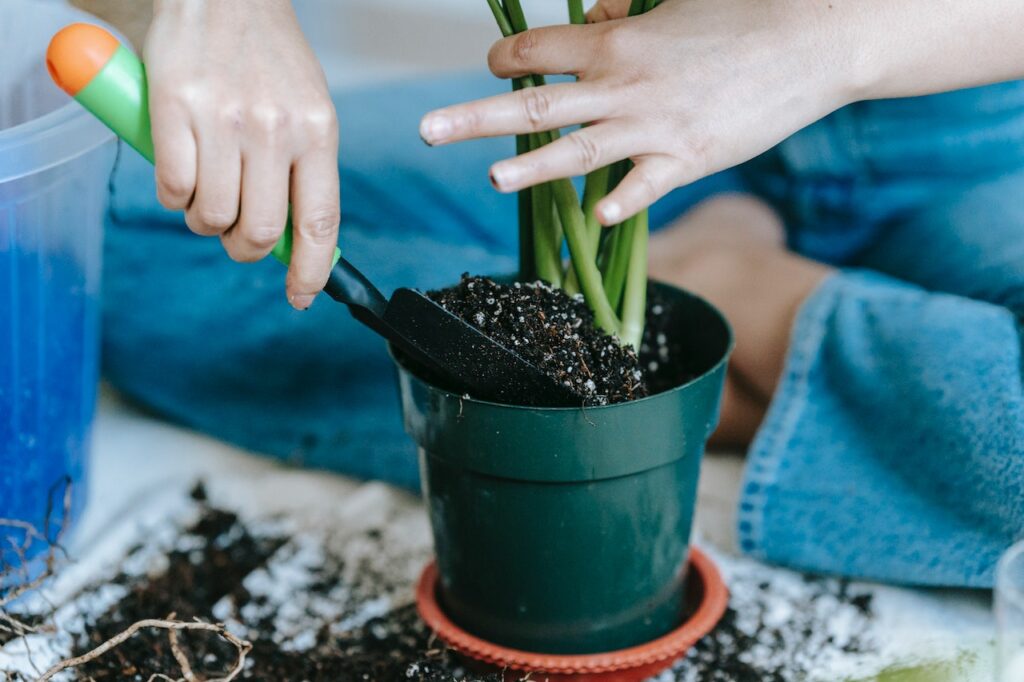
1. Select the Right Pot
Choosing the right pot is crucial for the overall health and growth of your Rhododendrons. Opt for large containers that allow ample space for the plant’s root system to develop and spread. Sturdy pots made of materials like terracotta or plastic are excellent choices. Ensure the pots have drainage holes to prevent waterlogging, which can lead to root rot. The size of the pot should be proportionate to the size of the Rhododendron plant, allowing enough room for the roots to expand without being too cramped.
2. Use the Ideal Soil Mix
Rhododendrons thrive in acidic soil, so it’s essential to use the right soil mix when planting them in pots. Look for a well-draining, acidic soil mix specifically formulated for acid-loving plants. A good mix usually consists of peat moss, pine bark, and perlite, providing the perfect balance of moisture retention and adequate drainage. Avoid using regular garden soil, as it may be too compact and alkaline for Rhododendrons, leading to root rot and nutrient deficiencies.
3. Consider Pot Size
Select pots that offer sufficient space for the Rhododendron’s root system to grow comfortably. A larger pot provides more room for the roots to spread out, leading to healthier and more robust plant growth. Avoid planting a small Rhododendron in an overly large pot, as it can lead to waterlogging and inadequate root development. Conversely, avoid using pots that are too small, as they can restrict the plant’s growth and lead to root-bound conditions.
4. Positioning the Pots
The location of your pots plays a vital role in the overall health of your Rhododendrons. Choose a spot with dappled sunlight, as direct afternoon sun can scorch the leaves. Partial shade with some morning sun is ideal, especially in regions with hot summers. Placing the pots strategically ensures the plants receive the right amount of light for healthy growth. Consider the microclimates of your garden or outdoor space to find the best locations that offer both sufficient sunlight and protection from harsh elements.
5. Watering Adequately
Proper watering is critical for container-grown Rhododendrons since they have limited access to water compared to those in the ground. Keep the soil consistently moist but not overly saturated, as waterlogged soil can suffocate the roots. Check the soil moisture regularly and adjust your watering schedule based on the weather conditions and the plant’s specific needs. As a general guideline, water when the top inch of the soil feels dry to the touch.
6. Monitor Humidity Levels
Rhododendrons appreciate higher humidity levels. However, achieving optimal humidity can be challenging indoors or in dry climates. To increase humidity around the plants, mist the leaves regularly or place a humidity tray filled with water near the pots. This helps mimic the humid conditions these plants prefer. For indoor-grown Rhododendrons, consider using a room humidifier to maintain suitable humidity levels.
7. Fertilize Appropriately
Regular fertilization ensures your Rhododendrons receive the necessary nutrients for healthy growth and abundant blooms. Use a balanced, slow-release fertilizer specifically designed for acid-loving plants. Apply the fertilizer in spring when new growth emerges and again after the flowering season to support the plant’s energy reserves. Be cautious not to over-fertilize, as excessive nutrients can lead to nutrient imbalances and negatively affect the plant’s health.
8. Mulch to Conserve Moisture
Mulching around the base of your Rhododendron pots helps conserve soil moisture, regulate temperature, and suppress weed growth. Apply a layer of organic mulch, such as pine needles or bark chips, leaving a small gap around the stem to prevent rot. Mulch not only helps retain moisture but also acts as a natural weed barrier, keeping the pots tidy and free from competing plants.
9. Prune for Health and Shape
Regular pruning is essential for maintaining the health and shape of your Rhododendrons in pots. Remove any dead, diseased, or crowded branches to improve air circulation and prevent the spread of diseases. Pruning can also help shape the plant and encourage a fuller, more attractive appearance. When pruning, use clean and sharp pruning shears to make precise cuts and prune just above a leaf node or bud to encourage new growth.
10. Protect from Frost
Shield your Rhododendrons in pots from frost and freezing temperatures, especially if you live in colder regions. Move the pots to a sheltered spot or cover them with frost cloths or burlap during freezing nights. Providing protection during extreme cold prevents damage to the plants’ tender foliage and roots. For added insulation, consider wrapping the pots with bubble wrap or hessian to protect the root zone from freezing temperatures.
11. Monitor pH Levels
Rhododendrons prefer slightly acidic soil with a pH range of 4.5 to 5.5. Regularly test the soil’s pH level using a testing kit and adjust it if needed by adding acidifying agents like sulfur. Maintaining the proper pH level is crucial for the plant’s ability to absorb essential nutrients from the soil. Use pH-adjusting products specifically formulated for acid-loving plants to maintain optimal soil acidity.
12. Select Suitable Rhododendron Varieties
When growing Rhododendrons in pots, choose compact and dwarf varieties that are well-suited to container gardening. Consider the plant’s mature size and growth habits to ensure they fit comfortably within the chosen pot. Dwarf varieties are ideal for small containers, while larger pots can accommodate larger compact cultivars. Additionally, consider selecting varieties based on their flower color and bloom time to create a stunning and diverse display of colors throughout the growing season.
13. Monitor Pests and Diseases
Regularly inspect your Rhododendron pots for any signs of pests or diseases, as container plants can be more vulnerable. Common issues include lace bugs, spider mites, and powdery mildew. Early detection and treatment are crucial to maintaining healthy plants. Use organic pest control methods whenever possible to minimize the use of chemical pesticides. If you notice any signs of pests or diseases, isolate the affected plant from others to prevent the spread of infestations.
14. Provide Good Air Circulation
Ensure proper air circulation around your Rhododendron pots to prevent fungal diseases. Avoid overcrowding and leave adequate space between pots for air to flow freely. Good air circulation helps reduce humidity levels and creates a healthier environment for plants. When arranging pots, avoid placing them too close together or against walls or other barriers that might restrict airflow.
15. Repot Regularly
As Rhododendrons grow, they may outgrow their pots, leading to restricted root growth. Repot your plants every two to three years or when the roots become root-bound to promote healthy development. Use fresh acidic soil in the new pot and ensure it has proper drainage. When repotting, gently loosen the roots and trim any excessively long or tangled ones to encourage new root growth.
16. Use Frost-Resistant Pots
In colder climates, choose frost-resistant pots to protect your Rhododendrons from freezing temperatures. Durable pots will withstand temperature fluctuations without cracking or breaking. Frost-resistant pots are especially important if you plan to leave the plants outdoors during winter. Look for pots made of materials designed to withstand freezing temperatures, such as fiber-reinforced concrete or high-quality frost-resistant plastic.
17. Avoid Overcrowding
Give your Rhododendrons ample space to thrive by avoiding overcrowding. Each plant should have enough room to spread its roots and branches comfortably. Overcrowding can lead to competition for resources and hinder the growth and health of the plants. When arranging multiple pots, ensure they are adequately spaced to allow room for growth and proper airflow between them.
18. Consider Companion Planting
Enhance the visual appeal of your Rhododendron pots by incorporating compatible companion plants. Azaleas, Heathers, and Camellias are excellent choices that share similar environmental requirements with Rhododendrons. Companion planting creates visually striking and harmonious arrangements. When choosing companion plants, consider their growth habits, color schemes, and blooming times to create a beautiful and complementary container display.
19. Deadhead Spent Flowers
Regularly deadhead faded blooms to promote continuous flowering and improve the overall appearance of your Rhododendrons in pots. Removing spent flowers redirects the plant’s energy into producing new growth and future blooms. When deadheading, pinch or snip off the faded flowers just above a healthy set of leaves or buds. Deadheading not only encourages more blooms but also keeps the plants looking tidy and attractive.
20. Monitor Temperature Extremes
During hot summer days, move your Rhododendron pots to a shaded area to protect the roots from excessive heat. Pots exposed to direct sunlight can heat up quickly, potentially damaging the roots. In freezing weather, provide extra insulation or bring pots indoors to shield them from cold drafts and freezing temperatures. Placing pots close to walls or other structures can provide additional protection from extreme temperatures and chilling winds.
Best Rhododendron for Pots or Containers
When selecting Rhododendrons for container gardening, it’s essential to choose compact and dwarf varieties that are well-suited to the limited space and root restrictions of pots. These smaller-sized rhododendrons not only fit well in containers but also offer stunning blooms, attractive foliage, and easy maintenance. Here are some of the best Rhododendron varieties for containers, along with their unique characteristics:
1. PJM (Rhododendron × PJM): This popular rhododendron is an excellent choice for containers due to its compact size and exceptional cold hardiness. ‘PJM’ displays vibrant purple-pink blooms in early spring, contrasting beautifully against its glossy green foliage. This evergreen shrub adds a splash of color to your patio or balcony during the cooler months.
2. Ginny Gee (Rhododendron ‘Ginny Gee’): With its small and rounded growth habit, ‘Ginny Gee’ is a perfect fit for smaller pots. This lovely rhododendron features delicate pink flowers and attractive, dark green leaves. Its compact size makes it an ideal choice for balcony gardens or small outdoor spaces.
3. Nova Zembla (Rhododendron ‘Nova Zembla’): If you’re looking for a show-stopping rhododendron for containers, ‘Nova Zembla’ is an excellent option. This compact shrub boasts large, vibrant red blooms and sturdy, dark green foliage. Its eye-catching flowers create a striking display, making it a focal point on your patio or deck.
4. Yakushimanum (Rhododendron yakushimanum): This dwarf rhododendron is perfect for smaller containers. ‘Yakushimanum’ features exquisite pink flowers and leathery, evergreen leaves. Its compact size and slow growth rate make it an ideal choice for maintaining its shape and beauty in pots.
5. Scarlet Wonder (Rhododendron ‘Scarlet Wonder’): For a burst of color in your container garden, ‘Scarlet Wonder’ is a wonderful pick. This compact rhododendron showcases vibrant scarlet-red flowers against glossy, dark green foliage. Its relatively small size makes it a great option for pots or even hanging baskets.
6. April Rose (Rhododendron ‘April Rose’): This dwarf rhododendron is prized for its early spring display of pinkish-lavender flowers. ‘April Rose’ has a dense and compact growth habit, making it an excellent choice for containers in small gardens or on patios.
7. Percy Wiseman (Rhododendron ‘Percy Wiseman’): With its unique pink and white variegated flowers, ‘Percy Wiseman’ adds a touch of elegance to container gardens. Its compact size and attractive foliage make it a charming addition to your patio or balcony.
8. Cunningham’s White (Rhododendron ‘Cunningham’s White’): This dwarf rhododendron features lovely white flowers and a compact growth habit. Its beautiful blooms and smaller size make it an excellent choice for container gardening in smaller spaces.
9. Blue Diamond (Rhododendron ‘Blue Diamond’): If you prefer a rhododendron with unique flower color, ‘Blue Diamond’ is an ideal option. This compact shrub boasts striking blue-violet blooms, adding a touch of mystery and allure to your container garden.
10. Ramapo (Rhododendron ‘Ramapo’): With its lavender-blue flowers and compact size, ‘Ramapo’ is well-suited for containers. Its small stature makes it a versatile choice for patio gardening or small gardens.
People also ask
Can I grow Rhododendrons in pots on my balcony?
Yes, Rhododendrons can be grown in pots on balconies, patios, or any small outdoor space with adequate light and proper care.
How often should I water Rhododendrons in pots?
Keep the soil consistently moist but not waterlogged. Water when the top inch of soil feels dry to the touch.
Do Rhododendrons in pots require special fertilizer?
Yes, use a balanced, slow-release fertilizer for acid-loving plants in spring and after flowering.
Can I keep Rhododendrons in pots indoors?
Yes, but provide ample light and humidity. Move them outdoors occasionally to allow for air circulation and light exposure.
How big should the pot be for Rhododendrons?
Choose pots with enough room for the plant’s root system to grow. Larger pots are better for mature Rhododendrons.
Do Rhododendrons in pots need pruning?
Yes, regular pruning is necessary to maintain shape, remove dead wood, and encourage new growth.
Can Rhododendrons in pots survive winter?
Yes, but protect them from frost and freezing temperatures by moving pots to a sheltered spot or indoors.
What are the Problems with rhododendrons in pots?
Rhododendrons in pots can suffer from overwatering, root-bound conditions, and nutrient deficiencies due to limited soil space. They are also more susceptible to pests and diseases, and temperature fluctuations may stress the plants. Careful management is essential for their successful growth.
Wrap up on Growing Rhododendrons in pots
Growing Rhododendrons in pots or containers is a rewarding and enjoyable experience that allows anyone, regardless of garden space, to appreciate these beautiful flowering shrubs. Embrace the versatility of container gardening and enjoy the beauty of Rhododendrons in any small space, whether indoors or on your balcony or patio. With proper care, attention to detail, and a bit of creativity, your Rhododendrons in pots will reward you with a breathtaking and colorful showcase of nature’s wonders.

